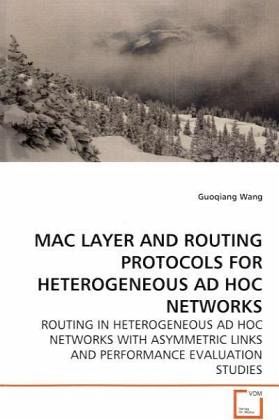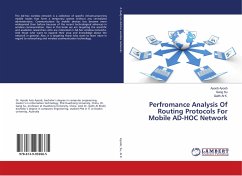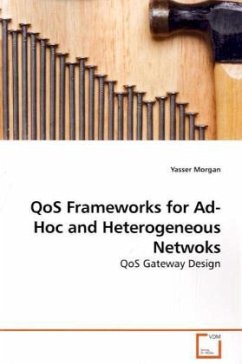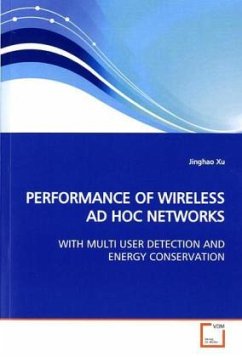
MAC LAYER AND ROUTING PROTOCOLS FOR HETEROGENEOUS AD HOC NETWORKS
ROUTING IN HETEROGENEOUS AD HOC NETWORKS WITH ASYMMETRIC LINKS AND PERFORMANCE EVALUATION STUDIES
Versandkostenfrei!
Versandfertig in 6-10 Tagen
51,99 €
inkl. MwSt.

PAYBACK Punkte
26 °P sammeln!
In a heterogeneous ad hoc network, assorted deviceswith different computation and communicationcapabilities co-exist and the links are asymmetric.Most MAC layer and routing protocols for ad hocnetworks routinely assume that all links aresymmetric and are unable to exploit the asymmetriclinks present in a network, thus leading to aninefficient bandwidth utilization, or, in the worstcase, to lack of connectivity. To exploit theasymmetric links, the protocols must deal with theasymmetry of the path from a source node to adestination node which affects either the delivery ofthe original packets, o...
In a heterogeneous ad hoc network, assorted devices
with different computation and communication
capabilities co-exist and the links are asymmetric.
Most MAC layer and routing protocols for ad hoc
networks routinely assume that all links are
symmetric and are unable to exploit the asymmetric
links present in a network, thus leading to an
inefficient bandwidth utilization, or, in the worst
case, to lack of connectivity. To exploit the
asymmetric links, the protocols must deal with the
asymmetry of the path from a source node to a
destination node which affects either the delivery of
the original packets, or the paths taken by
acknowledgments, or both. Furthermore, the hidden
node problem requires a more careful analysis in the
case of asymmetric links.
We conclude that MAC layer and routing protocols
capable of using asymmetric links are more complex
than traditional ones, but can improve the
connectivity, and provide better performance. We are
confident that approximate results for various
performance metrics of wireless networks obtained
using time-parallel simulation are sufficiently
accurate and able to provide the necessary insight
into the inner workings of the protocols.
with different computation and communication
capabilities co-exist and the links are asymmetric.
Most MAC layer and routing protocols for ad hoc
networks routinely assume that all links are
symmetric and are unable to exploit the asymmetric
links present in a network, thus leading to an
inefficient bandwidth utilization, or, in the worst
case, to lack of connectivity. To exploit the
asymmetric links, the protocols must deal with the
asymmetry of the path from a source node to a
destination node which affects either the delivery of
the original packets, or the paths taken by
acknowledgments, or both. Furthermore, the hidden
node problem requires a more careful analysis in the
case of asymmetric links.
We conclude that MAC layer and routing protocols
capable of using asymmetric links are more complex
than traditional ones, but can improve the
connectivity, and provide better performance. We are
confident that approximate results for various
performance metrics of wireless networks obtained
using time-parallel simulation are sufficiently
accurate and able to provide the necessary insight
into the inner workings of the protocols.












